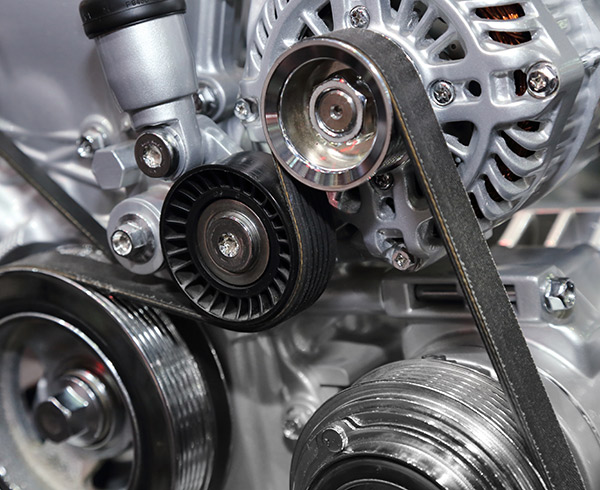Paying close attention to your vehicle alert you when the drive belt tensioner is causing problems. This tensioner is a pulley connected to an adjustable pivot or spring designed to maintain tension along the engine belts. The type of tensioner designed with a pivot point can be altered manually. However, both types serve the same purpose of keeping tension along the engine’s serpentine belts to permit engine accessory functionality. But if the tensioner has problems, it impacts the manner in which belts move through the pulleys, ultimately compromising the vehicle’s functionality and performance. Thankfully, those who pay attention to their vehicle will find that a failing or completely shot tensioner will display a couple key symptoms that reveal there is a problem that necessitates servicing. Let’s take a look at the most common signs of a tensioner that is in the midst of failure or has already failed.
Accessories Dependent on the Belt are Failing
A bad drive belt tensioner causes the failure of the accessories driven by the belt. Numerous engine accessories ranging from the water pump to the alternator and air conditioner compressor are driven by the belt. If the belt tensioner is loose or faulty, it may result in the belt snapping, ultimately disabling the related accessories, spurring issues such as a non-functional air conditioning system, an inactive electrical system (including the battery), and overheating. If the belt fails as a result of the tensioner’s failure, both will require replacement.
Squeaking or Grinding Noises from the Tensioner or Belt
A failing belt tensioner is likely to generate noise. Even a slightly loose tensioner has the potential to cause the belt to squeal or squeak, especially when the engine starts up. However, there is also a chance the tensioner bearing or pulley has worn out, creating the harsh grinding noise.
Excessive Belt Wear
Take a look at the drive belt to see if it has an unusual amount of wear. If there is a problem with the tensioner pulley, it might hasten wear along the belt or cause the wear to be especially harsh. A faulty tensioner has the potential to fray the belt’s edges or possibly even lead to a break.
The Belt does not Track as it Should
Take a close look at the manner in which the belt tracks. If you find the belt is tracking off center or off the pulley edge, it is a sign the tensioner is failing. Furthermore, if the belt moves off the tensioner, it is an indication the tensioner is misaligned as a result of wear and tear.
The Tensioner Sticks
Apply torque to get a sense of the tensioner functionality. The torque will move the arm of the tensioner from stop to stop. This arm must move without impediment or hesitation. If the arm does not move in such a smooth manner, it is a sign the tensioner has failed.
You Hear Metal on Metal Contact
If there is metal on metal contact between the spring case and the arm, it will cause problems. To be more specific, pivot bushing wear and spring bushing wear are likely to result from such metal on metal contact.
The Tensioner “Stops” are Broken
If the tensioner “stops” along the spring case and arm are busted, it is a clear sign the tensioner has failed.
The Battery Light Illuminates
A failing belt tensioner may result in the illumination of the vehicle battery light. A slowing belt or one that completely slips out of its compartment will cause the battery to lose its juice. Furthermore, the alternator will not turn quickly enough to provide the battery with power.







